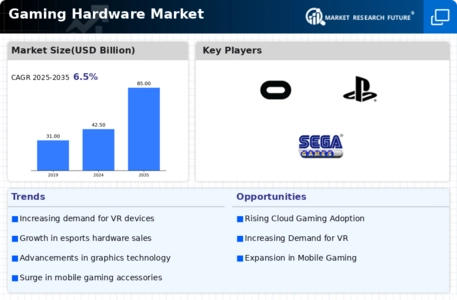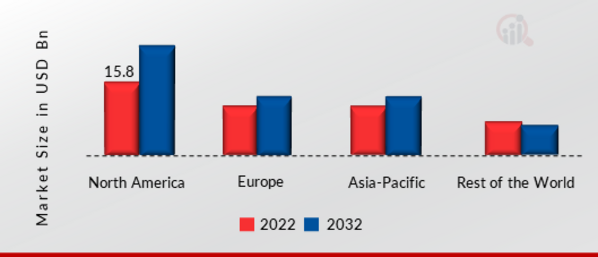Market Analysis
In-depth Analysis of Gaming Hardware Market Industry Landscape
The gaming hardware market exhibits a dynamic landscape driven by various market dynamics that shape its trajectory. Technological advancements form a cornerstone of these dynamics, with constant innovations fueling the market's growth. Graphics processing units (GPUs), central processing units (CPUs), and other gaming hardware components undergo regular upgrades to meet the increasing demands of modern games. This perpetual evolution not only caters to the appetite for improved gaming experiences but also fosters a continuous cycle of product releases and updates, keeping the market in a state of flux.
Consumer preferences significantly influence the market dynamics of gaming hardware. The rise of esports and the increasing popularity of multiplayer online games have propelled the demand for high-performance peripherals. Gaming mice, keyboards, headsets, and other accessories are designed to provide a competitive edge, reflecting the evolving preferences of gamers. Additionally, the shift toward virtual reality (VR) and augmented reality (AR) gaming experiences introduces new dynamics, influencing the development of specialized hardware to enhance immersive gameplay.
Market competition is a driving force that shapes the gaming hardware industry. Key players such as NVIDIA, AMD, Intel, and various gaming peripheral manufacturers engage in fierce competition to capture market share. This competitive landscape fosters innovation, with companies vying to outdo each other in terms of performance, features, and pricing. Strategic collaborations, partnerships, and exclusive deals with game developers further intensify this competition, contributing to a vibrant and rapidly evolving market.
Economic factors play a pivotal role in the market dynamics of gaming hardware. Disposable income levels and overall economic stability impact consumer spending on gaming setups. During economic downturns, consumers may prioritize essential purchases over high-end gaming hardware, while prosperous periods see increased investments in premium gaming equipment. The affordability of gaming hardware also influences market accessibility, with entry-level and mid-range products catering to a wider audience and driving market growth.
The convergence of technology is a transformative dynamic in the gaming hardware market. Smartphones, tablets, and smart TVs with gaming capabilities have become prevalent, expanding the market beyond traditional PCs and consoles. This trend prompts gaming hardware manufacturers to develop cross-compatible peripherals that can seamlessly integrate with various platforms. The blurring of lines between gaming on different devices introduces new challenges and opportunities, shaping the market dynamics to accommodate this shift in consumer behavior.
Environmental considerations are emerging as a crucial dynamic in the gaming hardware market. With a growing awareness of electronic waste and sustainability issues, consumers are increasingly inclined toward eco-friendly and energy-efficient gaming hardware options. Manufacturers are responding by adopting sustainable practices in production and designing products with recyclability and longevity in mind. This environmental consciousness introduces a new dimension to the market, influencing both consumer choices and manufacturers' strategies.
Regulatory dynamics, including safety standards and intellectual property regulations, also impact the gaming hardware market. Compliance with these regulations is essential for manufacturers to ensure the safety and legality of their products. Additionally, intellectual property protection is crucial in a market driven by innovation, as companies strive to safeguard their proprietary technologies and designs from unauthorized use.






Leave a Comment